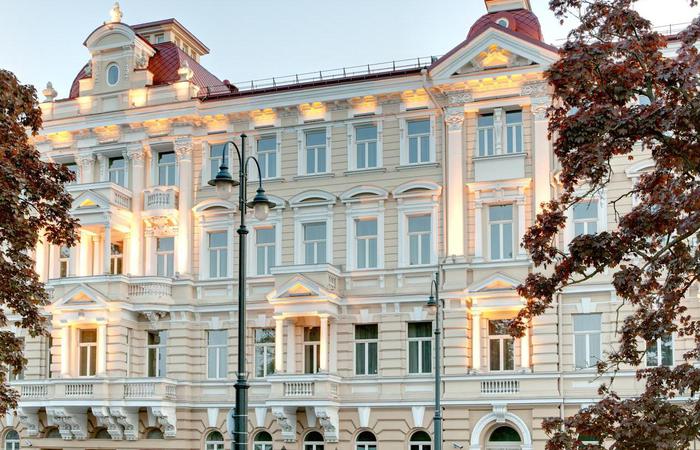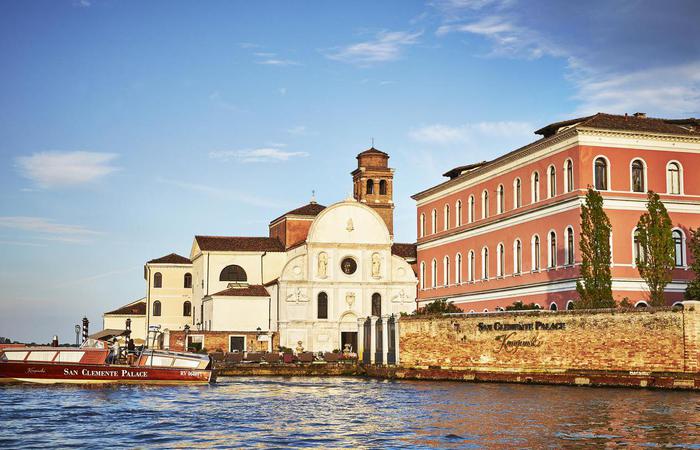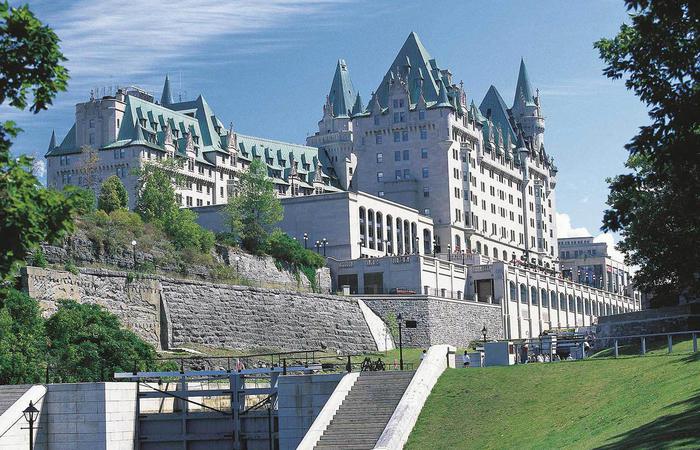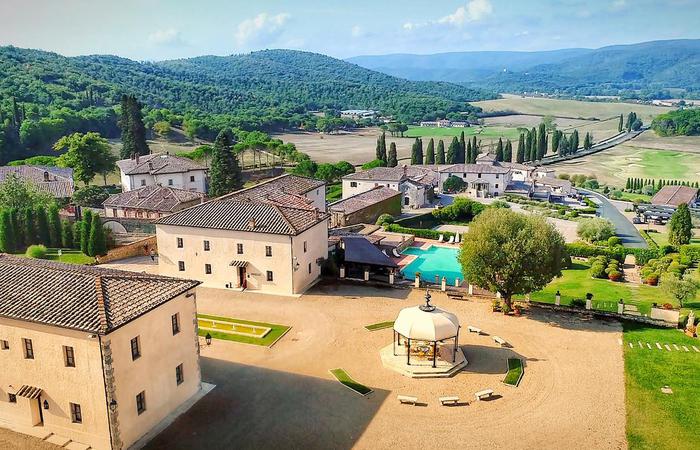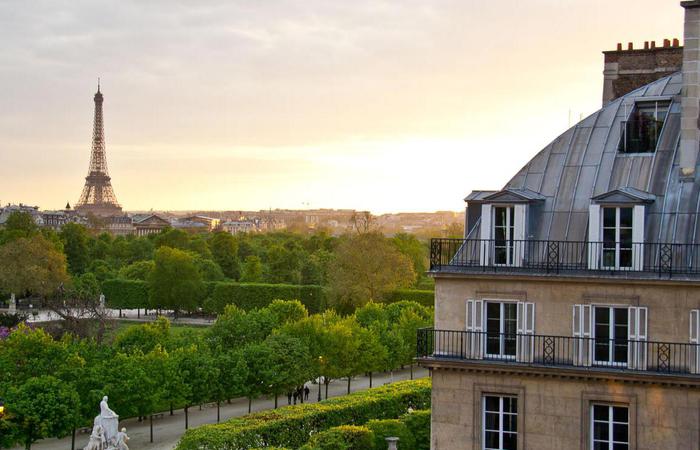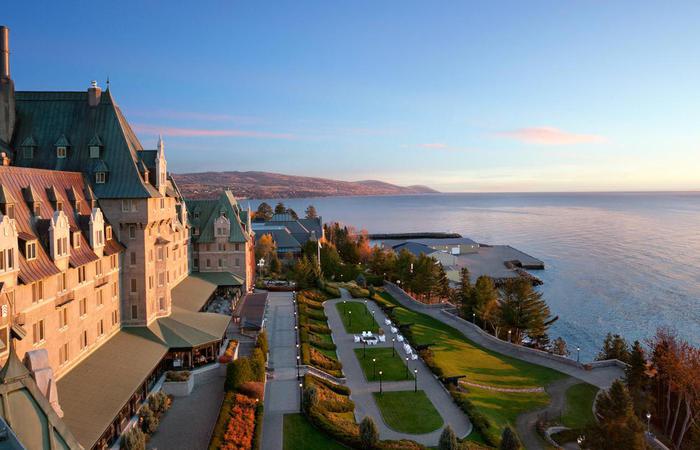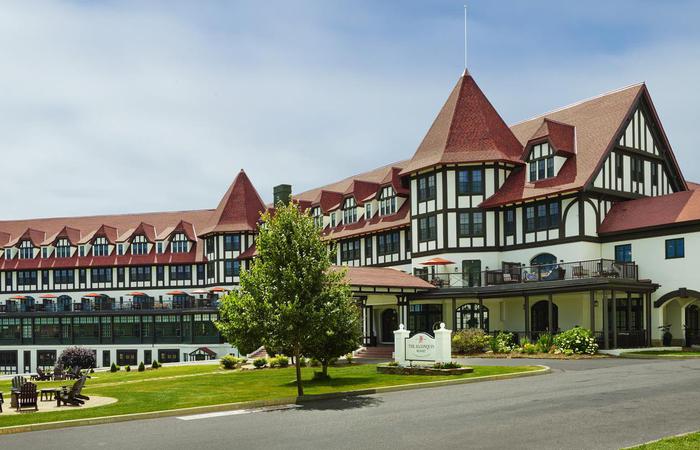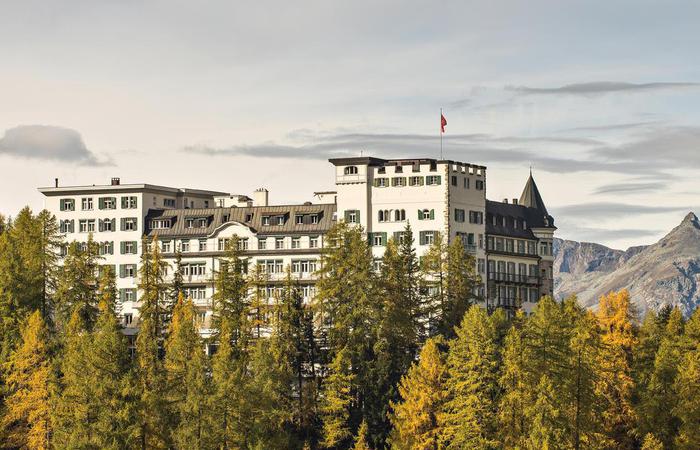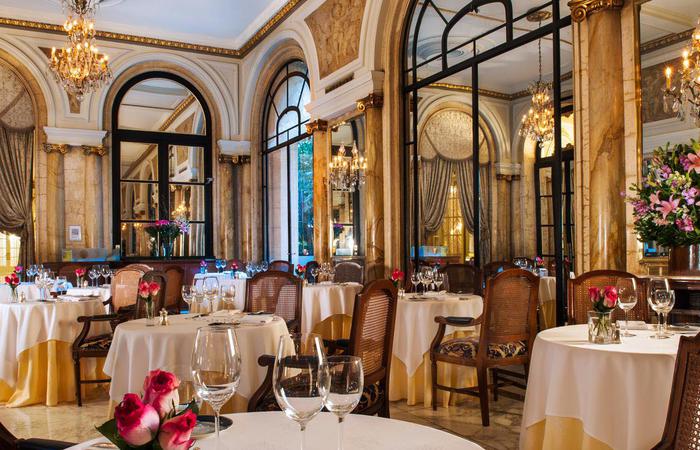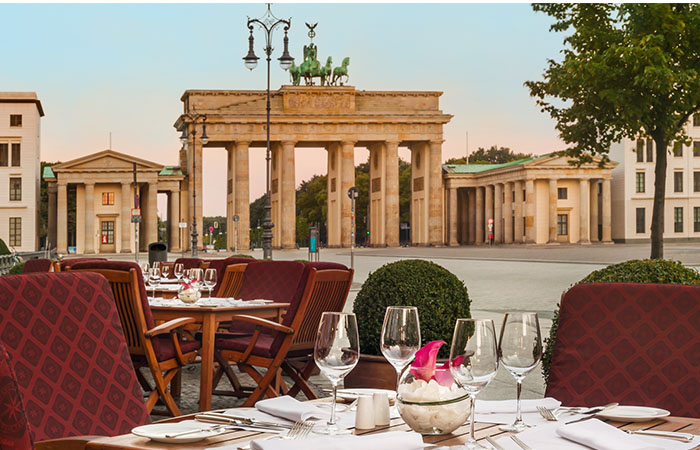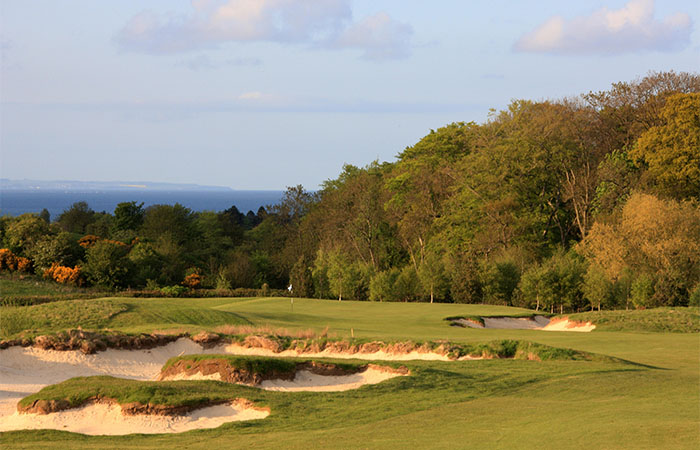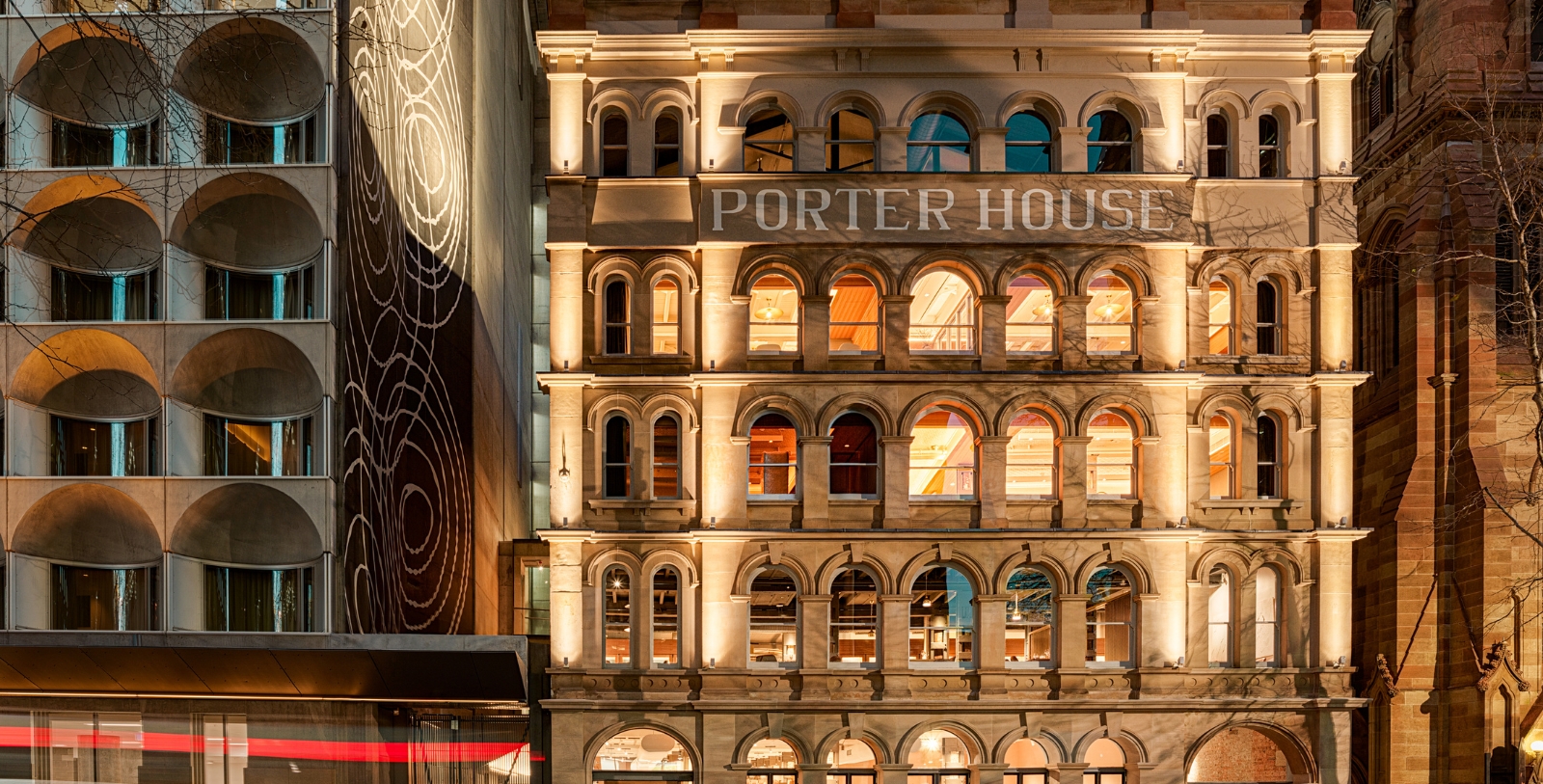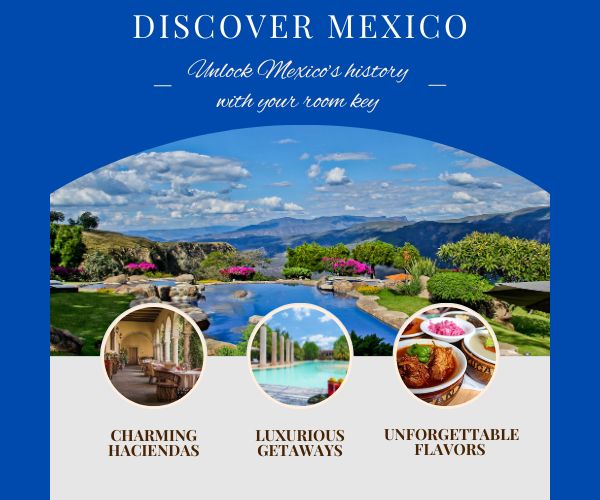Receive for Free - Discover & Explore eNewsletter monthly with advance notice of special offers, packages, and insider savings from 10% - 30% off Best Available Rates at selected hotels.
history
Discover The Porter House Hotel Sydney, which was once home to Australia’s leading tobacco manufacturer at the height of the Victorian era, Hugh Dixson & Sons.
Porter House Sydney – MGallery Collection, a member of Historic Hotels Worldwide since 2025, dates back to 1876.
VIEW TIMELINEIn 1839, a young ambitious tobacconist named Hugh Dixson emigrated to the nascent city of Sydney, Australia. Dixson had been driven by the promise of economic opportunity in the fledgling community, seeing as his native Scotland was then enforcing high-excise duties. He wasted no time establishing a small shop upon his arrival, which sold all kinds of imported tobacco goods from throughout the British Empire. This modest venture in turn laid the foundation for what would become Hugh Dixson & Sons, one of Australia’s finest tobacco companies during the 19th century. Success did not come immediately for Dixson though, as he experienced difficulties maintaining his supply lines for a while. (He had also seen several private investments involving land, sugar, and shipping deteriorate, further complicating his financial situation.) Dixson’s commitment to quality and innovation eventually caused him to overcome those obstacles, with his business becoming a household name across Sydney by the beginning of the 1860s. In fact, Dixson soon realized that he required a bigger storefront to accommodate the rising demand for his tobacco products. In 1876, he commissioned architect J.F. Hilly to design a new four-story factory and warehouse complex along Castlereagh Street. Hilly proceeded to craft a magnificent industrial edifice over the following months, using brilliant Free Classical aesthetics to mold its distinctive exterior.
As soon as Hilly’s team finished its work, the structure became a symbol of Sydney’s emergence as a modern metropolis. Multiple Australian newspapers praised it to be an engineering marvel, with the Illustrated Sydney News celebrating it as “an ornament” to that area of the city. Following Hugh Dixson’s death in 1880, his son—also named Hugh—took over the business. Profits remained strong under his watch, enabling the company to expand to an even larger facility on neighboring Elizabeth and Park Streets. Although the Dixson family continued to own the site on Castlereagh Street, they leased it to tenants, including furniture manufacturer W.W. Campbell and wholesaler George Johnson & Sons. George Johnson & Sons then bought the whole facility on the eve of World War I and went about gradually expanding its size over the following decades. But in 1958, enterprising merchant Harry Kallinkos obtained the location, renaming it as the “Porter House” after his own leather grindery. Despite changes in ownership and function, the building still managed to retain its amazing architectural integrity and historical significance. Perhaps the most impressive sign of its enduring cultural importance was the decision of the regional government to list the facility on its official State Heritage Inventory in the early 21st century.
It was around this time that a bold new vision arose for the former tobacco works—to transform it into a contemporary hotel that paid homage to its fascinating history. Candelapas Associates oversaw the execution of the plan, implementing extensive renovations that ensured the structure’s rich character remained intact. The result was “The Porter House Hotel Sydney – MGallery Collection,” a hotel that seamlessly blended its industrial past with contemporary luxury. The original factory served as the nucleus for the whole destination, housing thrilling venues like a bar, restaurant, and function spaces. Furthermore, the design safeguarded key features first installed during the Victorian era, like exposed timber joists, pressed metal ceilings, and terrazzo staircases. The hotel’s transformation was not merely aesthetic, it was deeply interpretive, too. Archaeological artifacts discovered amid the renovations were displayed inside the lobby, while the reinstated “Porter House” signage on the façade acted as a nod to its commercial roots. The Porter House Sydney – MGallery Collection is truly a time capsule that wonderfully chronicles Sydney’s origins. Thanks to its thoughtful adaptation, the hotel has exemplified how heritage can be preserved and celebrated in a modern context.
-
About the Location +
Currently Australia’s largest city, Sydney is a metropolis with a fascinatingly rich heritage. Indeed, its history harkens back millennia to the Aboriginal Australians, who had lived in the area of modern-day Sydney for some 30,000 years. Making great use of the region’s deep natural harbor, the Aboriginal Australians developed a network of small coastal communities that thrived on fishing. The villages themselves were arranged via a clan system, which observed uniquely different sets of cultural practices, beliefs, and even languages. Among the most prominent clans to exist around the Sydney area were the Dhaurg and Dharawal people, who dominated the local political landscape for generations. It was a branch of the greater Dharawal clan that met British explorer James Cook when he “discovered” the site in the late 18th century. Although they were unsuccessful establishing peaceful relations with the local Aboriginal Australians, Cook and his men nonetheless recorded their interactions. But they also collected a variety of plant life and charted the undulating geography, making the first maps of the region. Calling the location “Botany Bay,” Cook and his crew left to report on their findings to British Parliament after spending several days in the area.
The research subsequently inspired a second expedition led by Arthur Phillip in 1788. Finding Cook’s original landing spot unsuitable for a prospective settlement, Phillip sailed his fleet of 11 ships further into the harbor to a place he called “Port Jackson.” He then founded a nascent community along the shoreline that he named “Sydney” after the sponsor of the trip, Thomas Townshend, 1st Viscount Sydney. The little community then emerged as the nucleus of a colony referred to as “New South Wales.” The city’s population was largely constituted of convicts since New South Wales as a whole was originally meant to function as a penal colony. Sydney’s colonial administrators directed Sydney to be small in stature as such, surviving just on subsistence agriculture. British authorities largely forbade the presence of large industry as well, especially shipbuilding. The imposed economic conditions and harsh environment thus made life in early Sydney difficult, resulting in periodic famines that could only be resolved through infrequent trade with Great Britain. Relations with the local Aboriginal Australians remained tense, too, leading to episodic bouts of conflict. Bands of convicts and free settlers harbored their own hostilities to the colonial government in Sydney, even spawning a few short-lived rebellions that called for increased autonomy.
The situation in Sydney fortunately turned for the better in the early 19th century, once adventurous pioneers managed to find a path to the fertile plateaus that laid west beyond the surrounding Blue Mountains. Now bearing access to lucrative farms, Sydney finally enjoyed a stable food supply that encouraged more settlement. International trade soon flourished as well, incentivizing even more British settlers to relocate to Sydney. Helping to spur this development was a new colonial governor named Lachlan Macquaire, who oversaw a series of public building projects that raised dozens of hospitals, churches, and schools. Macquaire received significant help from Francis Greenway, a convict-turned-architect who created the Georgian-style motifs that defined most of Sydney’s historic downtown core for decades. But Macquaire also refined the local legislative codes that gave more civil rights to the residents living in Sydney, regardless of their criminal background. These legislative changes continued after Macquaire’s departure in 1821, culminating with the elimination of forced convict migrations during the 1840s. Sydney was then declared a city not long thereafter, functioning as the home for the New South Wales Legislative Council.
Sydney’s economy only continued to expand throughout the remainder of the century, which left it in constant competition with the city of Melbourne. Additional construction projects commenced that created iconic structures like the University of Australia, the Australian Museum, and the General Post Office. The size of Sydney had also grown considerably, eclipsing more than one million residents by the early 20th century. Despite its considerable influence, Sydney did not become the national capital when all the disparate Australian colonies officially federated into the state of “Australia” in 1901. Nevertheless, the city maintained its prestigious reputation for years to come, eventually becoming one of the most foremost communities in the British Empire and its successor, the Commonwealth of Nations. Its citizens even played an integral role fighting for the Allies during both World Wars, with many enlisting to serve in the legendary ANZAC Corps. Sydney is still one of Australia’s most illustrious communities today, continuing to act as the primary cultural center of the entire country. It is the foremost destination for cultural heritage travelers when they go to Australia, finding its distinctive historical landmarks to be incredibly interesting. Among the most noteworthy sites they enjoy seeing include The Rocks, Darling Harbour, the Sydney Harbour Bridge, the Royal Botanic Garden Sydney, and the UNESCO-recognized Sydney Opera House.
-
About the Architecture +
When architect J.F. Hilly designed the structure that would eventually become “The Porter House Hotel Sydney – MGallery Collection,” he relied upon Free Classical architectural motifs to guide his work. Free Classical architecture itself first emerged in Great Britain during the mid-19th century as a response to the rigid formalism of earlier neoclassical styles. While it retained the essential vocabulary of classical architecture—columns, pediments, and cornices, for instance—it allowed for greater freedom in composition, ornamentation, and material use. Architects began to blend elements from Greco-Roman, Renaissance, and Baroque traditions as a result, creating buildings that were at once grand yet adaptable. This stylistic flexibility made Free Classical architecture well-suited to the colonies, where architects usually had to adapt European ideals to local conditions, resources, and tastes. In Australia specifically, the form arrived amid the Victorian gold rushes of the 1850s and 1860s. Indeed, the mining boom triggered a wave of immigration and economic growth that reshaped a majority of the colony’s nascent communities, including Melbourne, Adelaide, and Sydney. With newfound wealth subsequently came a desire to express civic pride and cultural refinement through architecture.
Free Classical architecture was ideal for fulfilling this purpose. Its monumental forms and classical references evoked the authority of ancient Rome and the sophistication of Renaissance Europe, which aligned perfectly with the aspirations of a society eager to assert its place on the world stage. At the same time though, its eclecticism allowed architects to experiment and innovate, resulting in a uniquely Australian interpretation of the style. In Victorian Australia, Free Classical buildings thus featured rusticated stonework, colonnaded porticos, and balustrated parapets. Perhaps the best-known structures where those traits appeared were the Royal Exhibition Building in Melbourne and the General Post Office in Sydney. Nevertheless, the success of Free Classical architecture in Australia was due in large part to the talents of architects like Joseph Reed, James Barnet, and William Wardell, who were trained in Britain and brought with them a deep understanding of classical design principles. These architects in turn worked closely with colonial governments, wealthy merchants, and religious institutions to develop buildings that reflected both European traditions and provincial aspirations. Patrons were often motivated by a desire to legitimize their social status and contribute to the cultural life of their cities.
Banks and insurance companies, in particular, favored the Free Classical style for its associations with stability and trustworthiness. Meanwhile, churches and schools adopted it to convey moral authority and intellectual rigor. But by the early 20th century, Free Classical architecture had nonetheless given way to newer styles such as Federation, Edwardian Baroque, and eventually Modernism. However, many of the buildings constructed during the Victorian era have survived and are now recognized as significant heritage sites. In places like Melbourne and Sydney, these structures continue to shape the urban landscape, serving as a tangible link to modern Australia’s formative years. Their preservation is not only a matter of architectural interest but also a testament to the cultural ambitions of a young nation striving to define itself. Free Classical architecture in Victorian Australia represents more than just a stylistic choice—it is a reflection of a society in transition, grappling with its colonial identity while aspiring to national maturity. Through its grand public buildings, elegant commercial premises, and stately homes, Free Classical style captured the optimism, wealth, and complexity of the Victorian era. More importantly, these landmarks stand as enduring symbols to a time when architecture was both an art and a statement of cultural identity.

